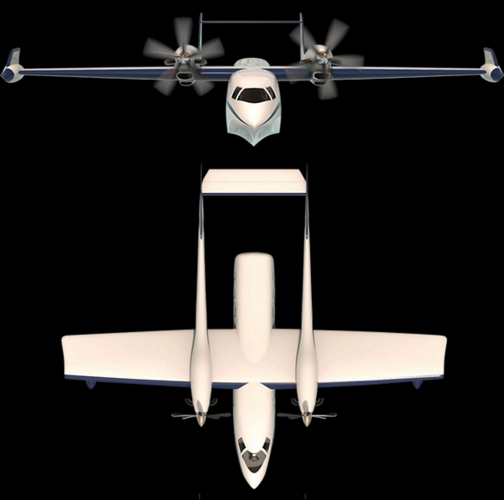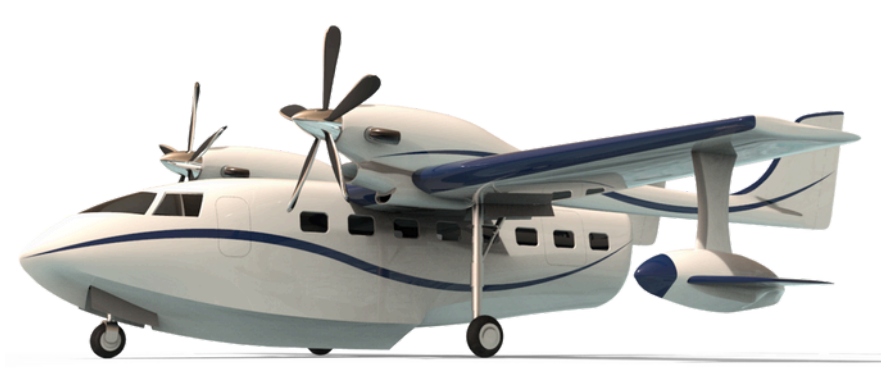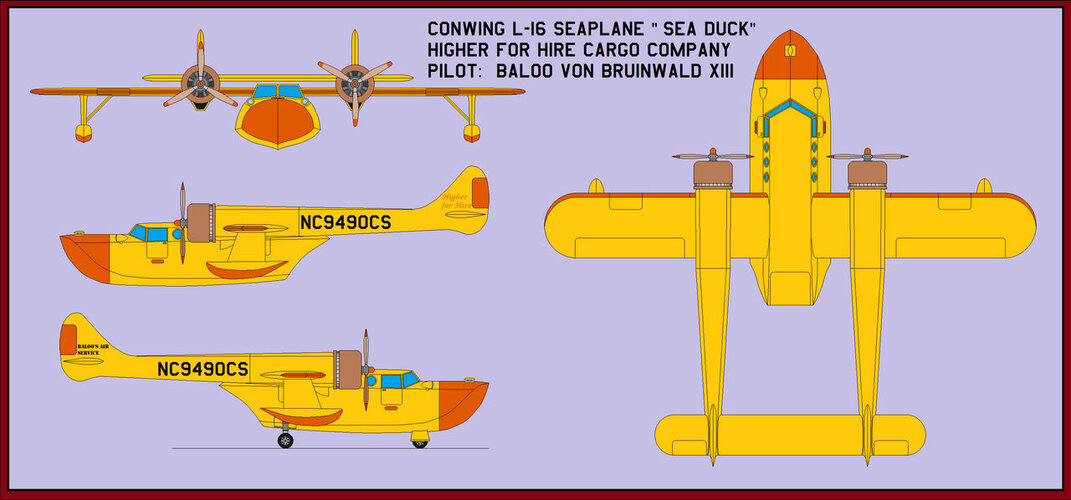- Joined
- 25 June 2009
- Messages
- 14,726
- Reaction score
- 6,060
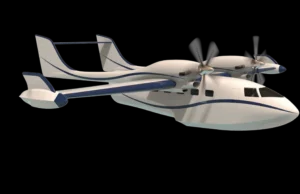
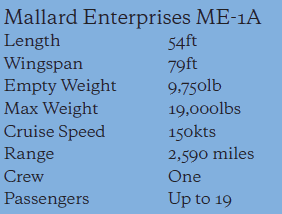 Here is the Mallard ME-1A flying boat, still only a project, but which could well become a reality if the current orders are proceeded with (I'm being cautious because there have been multiple examples of promising new designs that received substantial orders but could never become reality for lack of funds.
Here is the Mallard ME-1A flying boat, still only a project, but which could well become a reality if the current orders are proceeded with (I'm being cautious because there have been multiple examples of promising new designs that received substantial orders but could never become reality for lack of funds.The ME-1A's design is a weird mix of old and new, and of its creators' own admission, was inspired by the venerable Grumman amphibian flying boats of the past — the company name "Mallard" being directly taken from one of them. The company's goal is to enable operators to connect to regions that lack infrastructure and direct accessibility. The fledgling Mallard Enterprises (not to be confused with the Mallard company in Texas that refurbishes old G-73 aircraft with turboprop engines) is located at Brunswick Executive Airport (BXM), in Maine.
Source: Global Conference on Aeronautical, Aerospace and Mechanical Sciences (GCAAMS-2024) SouvenirME is co-founded by Dan Peabody & Mohan Chunduri who worked together at Sikorsky Aircraft. Dan spent over 3 decades in the USAF as a pilot, retiring as a Brigadier General, then managed Sikorsky's key accounts in the Middle East delivering $2B in sales of military and commercial aircraft. He is an engineer, lawyer & certified flight instructor. Mohan has an MBA from Kelley School of Business with 4 decades experience in various industries including Aerospace at Fortune 500 companies and startups. ME's advisory team combines for +300 years of experience in the aviation industry, and many are pilots. Specialties include FAA acting administrator, Aeronautical Engineering development, aerospace composites, economic development, director level business development, and banking. ME is working with 3 teams of engineering consultants with deep experience fully designing, building, and certifying new aircraft whose clients include Fortune 100 aerospace OEMs. ME is actively partnering with regional airlines, supply chain and others.
Source: AEROSPACE Volume 51 Number 9, September 2024Maine-based Mallard Enterprises has revealed it is developing a multi-mission twin-engine, twin-boom turboprop amphibian – the ME-1A. When configured for commuter/passenger flights, the ME-1A will have up to 19 seats, with passengers boarding through the left aft door or rear ramp. The same rear entry enables ease of access to the 840 cubic foot cabin, with the aircraft having a projected useful load of 8,000lb. A VIP configuration will also be an option, with a yacht style interior with between 9 and 12 luxury seats, and the designers even envisage a version of the aircraft being used as a flying recreational vehicle. Mallard is also targeting military and paramilitary operators with a multi-mission variant able to be optimised for search and rescue, coastal surveillance, maritime patrol, ASW, and SOF support with two underwing hardpoints for sensors. In the medevac role it will have the ability to carry two standard EMS medical sled units, equipment and supplies but, for a mass casualty event, the airframe can be configured with up to 12 patient litters. Meanwhile, a proposed aerial firefighting variant could transport 12 firefighters and up to 750gal of retardant to rural areas and also have the ability to scoop up water from lakes to drop on fires without returning to reload.
While the – so far unnamed – turboprop powerplants will be certified to use SAF, the aircraft is being designed to have long-term propulsion flexibility so that, as renewable propulsion systems mature, the regulatory framework to certify them is adopted and the infrastructure to support them is in place, the platform will be capable of transitioning to the systems that best fit operators' individual mission needs and sustainability goals.
As a flying recreational vehicle, the ME-1A could be configured with the forward fuselage used as living/sleeping quarters, complete with galley. Meanwhile, the rear could accommodate hunting and fishing equipment, quad bikes, motorcycles, paddle boards, dinghies or any ‘toys’ the owner wants to deploy from the rear loading ramp. The twin-boom design has been chosen to allow access to a large rear entry door. This can be fitted with a ramp to easily load cargo and passengers from the rear of the aircraft, which can be reversed into a dock or the shore for fast, safe passenger transfers.
Since debuting at this year’s Singapore Airshow, the ME-1A has racked up an impressive series of LOIs, particularly from carriers in India spurred by the Indian government’s UDAN regional initiative to provide ‘last mile’ connectivity to rural areas, including Skylink Aviation. In July, Maritime Energy Heli Air Services (MEHAIR) placed an LOI for 50 aircraft, start-up airline, UrTripO Aviation signed for five and Flyjet Aviation reserved three. Türkiye's Mavi Air has also placed an LOI for four aircraft to provide year round regional air connectivity between Türkiye, Greece and Italy.
The ME-1A will be certified as a single-pilot aircraft, using integrated flight deck avionics and a single-lever FADEC engine management system.
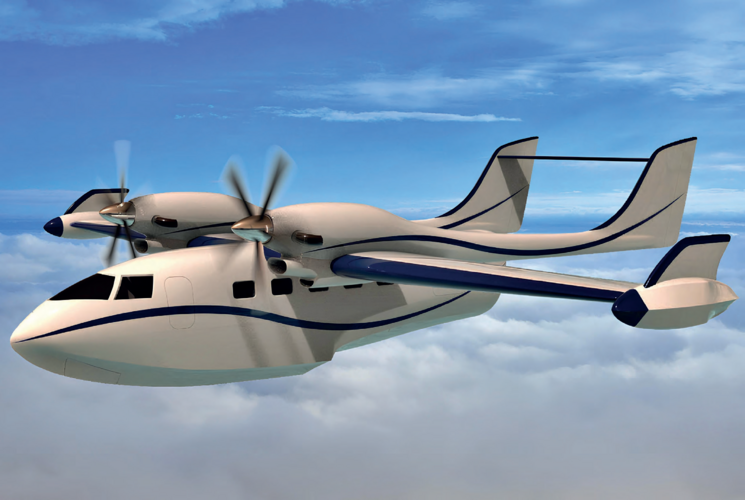
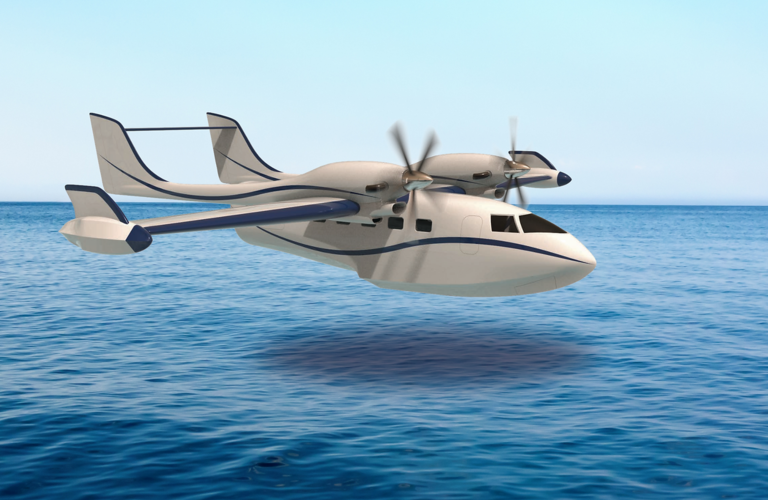
 Much more information on
Much more information on the official company website:
https://mallard.enterprises/

